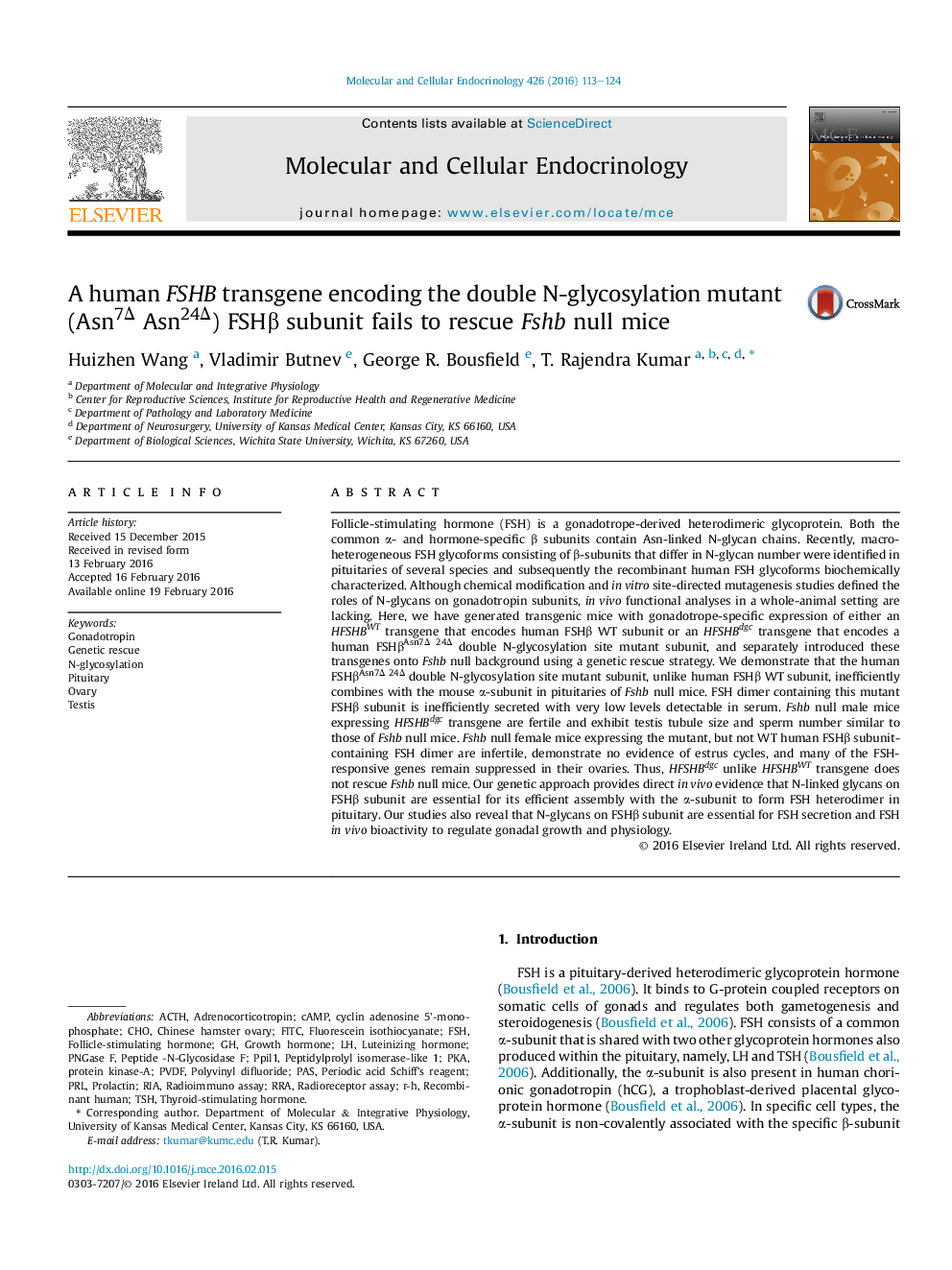| کد مقاله | کد نشریه | سال انتشار | مقاله انگلیسی | نسخه تمام متن |
|---|---|---|---|---|
| 2195599 | 1550853 | 2016 | 12 صفحه PDF | دانلود رایگان |

• In vivo functions of N-linked glycans on human FSHβ subunit tested in mouse models.
• HFSHBWT and HFSHBdgc (encodes a N-glycosylation mutant hFSHβ subunit) mice are generated on an Fshb−/− background.
• HFSHB transgenes are targeted to pituitary and specifically expressed in gonadotropes.
• HFSHBdgc encoded double N-glycosylation mutant human FSHβ subunit inefficiently assembles with mouse α-subunit.
• Double N-glycosylation mutant human FSHβ subunit containing FSH dimer is inefficiently secreted and does not rescue Fshb−/− mice.
Follicle-stimulating hormone (FSH) is a gonadotrope-derived heterodimeric glycoprotein. Both the common α- and hormone-specific β subunits contain Asn-linked N-glycan chains. Recently, macroheterogeneous FSH glycoforms consisting of β-subunits that differ in N-glycan number were identified in pituitaries of several species and subsequently the recombinant human FSH glycoforms biochemically characterized. Although chemical modification and in vitro site-directed mutagenesis studies defined the roles of N-glycans on gonadotropin subunits, in vivo functional analyses in a whole-animal setting are lacking. Here, we have generated transgenic mice with gonadotrope-specific expression of either an HFSHBWT transgene that encodes human FSHβ WT subunit or an HFSHBdgc transgene that encodes a human FSHβAsn7Δ 24Δ double N-glycosylation site mutant subunit, and separately introduced these transgenes onto Fshb null background using a genetic rescue strategy. We demonstrate that the human FSHβAsn7Δ 24Δ double N-glycosylation site mutant subunit, unlike human FSHβ WT subunit, inefficiently combines with the mouse α-subunit in pituitaries of Fshb null mice. FSH dimer containing this mutant FSHβ subunit is inefficiently secreted with very low levels detectable in serum. Fshb null male mice expressing HFSHBdgc transgene are fertile and exhibit testis tubule size and sperm number similar to those of Fshb null mice. Fshb null female mice expressing the mutant, but not WT human FSHβ subunit-containing FSH dimer are infertile, demonstrate no evidence of estrus cycles, and many of the FSH-responsive genes remain suppressed in their ovaries. Thus, HFSHBdgc unlike HFSHBWT transgene does not rescue Fshb null mice. Our genetic approach provides direct in vivo evidence that N-linked glycans on FSHβ subunit are essential for its efficient assembly with the α-subunit to form FSH heterodimer in pituitary. Our studies also reveal that N-glycans on FSHβ subunit are essential for FSH secretion and FSH in vivo bioactivity to regulate gonadal growth and physiology.
Journal: Molecular and Cellular Endocrinology - Volume 426, 5 May 2016, Pages 113–124